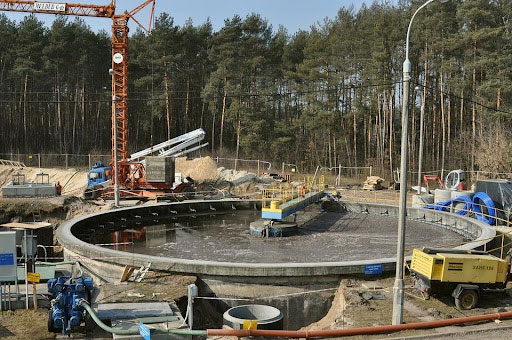Wastewater treatment plants become subjects of misbeliefs – stories people make up. In this, they are similar to guns, snakes, airplanes, and the weather. There are a few reasons for this tendency: People want answers. When they don’t know the answers, they make them up! People often get their answers from anyone who sounds like an expert, even if the “expert” knows no more than the answer-seeker. Some people like to believe the worst about something they don’t understand, and that’s implemented by “mysterious” people they don’t know.
The five misbeliefs we’ll tackle in this article are:
- All you need is a septic tank.
- WWTPs are noisy, obtrusive, ugly structures.
- They stink.
- Wastewater treatment plants produce drinkable water.
- Household chemicals damage treatment plants.
This is a far-from-complete list of people’s misconceptions. They are the biggest ones and all we have room to discuss in this short article.
Read on to understand the truth about modern wastewater treatment methods and how they support your lifestyle.
All you need is a septic tank
Septic tanks provide some treatment of sewage, but their effluents are far from a suitable quality to discharge into a waterway.
The effluent from a septic tank must be distributed into a carefully designed drain field that includes sand, gravel or other filtering media. The field must be above the water table to allow uninterrupted percolation through the filtering media and into the ground.
Because of the space requirement and the environmental limitations, septic tanks and their drain fields are suitable only on carefully chosen sites in rural areas.
Septic tanks and their related systems are not suitable in urban areas.
A central wastewater treatment plant is a far better solution in populated areas.

WWTPs are Noisy, Obtrusive, Ugly Structures
Wastewater treatment plants can use many different types of equipment and processes that operate quietly and unobtrusively. Even within certain process designs, it’s possible to alter the external appearance of the plant to be compatible with its surroundings.
In some locations, the plant can be entirely out of sight behind a line of trees or behind other structures.
There are a few wastewater treatment plants in the world that are completely underground. More expensive, of course! How badly do you want it unobtrusive?
As with any construction project, costs, appearance and other factors must be balanced to create the best combination of features considering all the factors.
WWTPs stink!
They don’t have to be obtrusive in this regard, either.
If the wastewater treatment plant is correctly sized, installed and maintained, it’s possible to minimize odors and, in many cases, to entirely eliminate them.
A key factor in odor elimination is proper scheduling of tank or filter cleaning and sludge removal.
Of course, proper handling of removed sludge is a critical part of odor control.
If the plant is overloaded or maintenance is lax, there can be odors. Correcting these conditions will reduce or eliminate them.
WWTPs Produce Drinkable Water
This is not true. Wastewater treatment plants are designed to reduce contaminants in the feed water to produce effluent that is safe to discharge into rivers, lakes or other bodies of moving water.
The discharge from a wastewater treatment plant should be colorless and odorless, but it is far from the nearly pure water we drink.
Plants that draw water from lakes, rivers etc., to produce drinking water use different processes and operate to different standards. Though there may be a component of WWTP discharge in the source for a potable water plant, it’s diluted by factors in the thousands or millions.

Household Chemicals Damage Treatment Plants
The processes used in well-designed WWTPs easily tolerate reasonable levels of detergents and other cleaning products normally used in household maintenance. It’s important that the chemicals are flushed away with plenty of rinse water so they’re well-diluted.
Significant amounts of grease or medicines or high volumes of caustic cleaning agents should be avoided.
Any time you’re uncertain of whether something is compatible with the system where you live, ask the plant operations people for advice.
We hope this article sheds some light on the myths surrounding these plants and systems and their operation.
To learn more about wastewater treatment plant design, visit Transcend Water’s website. You’ll find information on the Transcend Design Generator, an SaaS application that is the industry standard for designing treatment plants. These plants are environmentally friendly and can handle the demands of any particular installation.
Each page on Transcend’s website has a contact button where you can find answers to your wastewater treatment questions. If you have a plant design problem to solve, their experts can help you through that.










